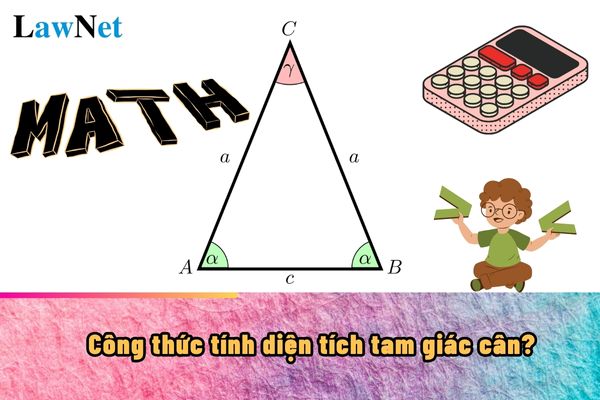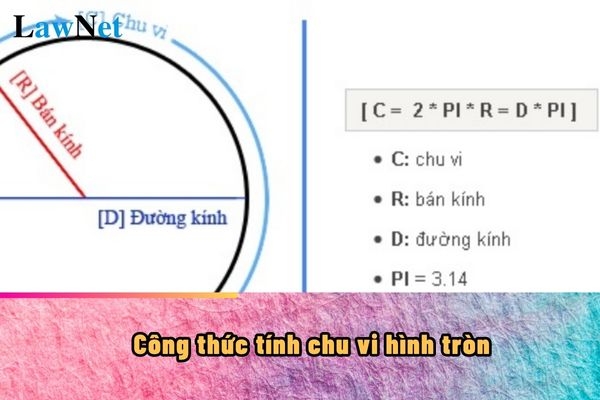Guidelines for grade 5 students in Vietnam: What is the formula for calculating the area of a right triangle?
Guidelines for grade 5 students in Vietnam: What is the formula for calculating the area of a right triangle?
Calculating the area of a right triangle is one of the basic lessons that priamry school students will learn in the Grade 5 Math curriculum.
To calculate the area of a right triangle, we use the following simple formula:
| S(abc) = 1/2 x a x b Or: Area of a right triangle = (first leg x second leg) : 2 |
*Example:
If a right triangle has two legs measuring 6cm and 8cm respectively, then the area of that triangle will be: (6cm x 8cm) : 2 = 24 cm²
*Note:
Units of Measurement: When calculating the area, ensure that the legs are in the same unit of measurement (e.g., both in cm, m, ...).
Drawing: Drawing the figure will help you visualize the problem better and avoid confusion.
*Some Practice Exercises:
A right triangle has legs measuring 5cm and 12cm respectively. Calculate the area of that triangle.
A piece of land shaped like a right triangle has legs measuring 25m and 10m respectively. They want to plant grass on that piece of land. Knowing that every 1m² of land requires 2kg of grass seeds, how many kilograms of grass seeds are needed to cover the entire piece of land?
*Note: The information is for reference only./.
>>> Read more Brief Overview of the lesson on Cells for grade 10 Biology according to the Canh Dieu curriculum in Vietnam
>>> Read more Preparation for grade 10 Math according to the Canh Dieu Textbook Volume 1 in Vietnam
>>> Read more Lesson Plan for the lesson Thanh âm for students in grade 5 in Vietnam
>>> Read more Lesson Plan for Nouns, Verbs, and Adjectives in grade 5 Vietnamese subject in Vietnam
>>> Read more Short Descriptive Essay about My Teacher for grade 5 students in Vietnam (Academic Year 2024-2025)

How to Calculate the Area of a Right Triangle in Grade 5? (Image from the Internet)
What are the core contents in Grade 5 Mathematics in Vietnam?
Based on Section V of the Appendix of the General Education Program for Mathematics issued together with Circular 32/2018/TT-BGDDT, the core contents in Grade 5 Mathematics and mathematics curriculum in general encompass:
The Mathematics subject content revolves around three major knowledge strands: Numbers, Algebra, and some basics of Calculus; Geometry and Measurement; Statistics and Probability.
Numbers, Algebra, and some basics of Calculus form the foundation for all further mathematical studies, aiming to develop mathematical tools to solve problems in mathematics and related scientific fields; cultivating students' deductive reasoning abilities, contributing to the development of logical thinking, mathematical creativity, and the ability to use algorithms.
Functions also serve as an important tool for constructing mathematical models of processes and phenomena in the real world.
Geometry and Measurement play a critical role in mathematics education, essential for students in acquiring spatial knowledge and developing essential practical skills.
Geometry and Measurement create tools to describe objects and entities in the surrounding world; provide students with fundamental mathematical knowledge and skills in Geometry, Measurement (with common measurement quantities) and enable students to reason, prove mathematical theorems, contributing to the development of logical thinking, mathematical creativity, spatial imagination, and intuition.
Additionally, Geometry also contributes to aesthetic education and enhances mathematical culture for students.
The integration of Measurement and Geometry enhances the visual and practical aspects of mathematics teaching.
Statistics and Probability are a mandatory component of school mathematics education, contributing to the application's practicality and the intrinsic value of mathematics education.
Statistics and Probability equip students with capabilities to comprehend and analyze information presented in various forms, understand the probabilistic nature of many dependencies in reality, form an understanding of the role of statistics as an important social source of information, and apply statistical thinking to data analysis.
Thus, enhancing understanding and research methodologies of the modern world for students.
Moreover, the Mathematics syllabus at each educational level appropriately allocates time for practical activities such as:
Implementing projects and learning tasks related to Mathematics, especially projects and tasks regarding the application of mathematics in reality;
Organizing math games, math clubs, forums, seminars, and math competitions;
Creating school newspapers (or internal publications) about Mathematics; visiting math training and research facilities, interacting with students who excel and have a passion for Mathematics, etc. These activities help students apply the knowledge, skills, attitudes accumulated from mathematical education and their experiences creatively in real life;
Developing students' capabilities to organize and manage activities, self-awareness, and self-activation;
Helping students identify their capabilities and interests to guide and choose future careers; forming essential competencies for future laborers and responsible citizens.
What are the study themes in Grade 5 Mathematics in Vietnam?
Based on Section V of the Appendix of the General Education Program for Mathematics issued together with Circular 32/2018/TT-BGDDT, the study themes in Grade 5 Mathematics are as follows:
In each class during the career-oriented education phase, students (especially those oriented towards natural sciences and technology) can choose to study several themes.
These themes aim to:
- Provide additional mathematical knowledge and skills to meet in-depth differentiation requirements (e.g., mathematical induction; three-variable linear systems; discrete random variables and their characteristics; planar transformations; technical drawing; some elements of graph theory); create opportunities for students to apply mathematics to solve multidisciplinary and practical problems, contributing to forming a scientific basis for STEM education (e.g., knowledge of linear systems to solve some physics problems about calculating resistances, current intensity in direct currents,...; balancing reactions in some chemistry problems,...; some biology problems about mitosis, meiosis,...; knowledge of derivatives to solve some optimization problems about distance, time, economy;...).
- Help students understand more deeply the role and applications of Mathematics in practice; gain insights into math-related professions and its value as a basis for career orientation post-high school.
- Create opportunities for students to recognize their talents, interests, develop enthusiasm and belief in learning Mathematics; enhance mathematical abilities and the ability to explore math-related issues throughout life.







- Sample explanation essay on flooding for grade 8 students in Vietnam
- Are lower secondary school teachers in Vietnam required to have a master's degree?
- Guidelines on preparing the lesson "Chiều xuân" for grade 11 students in Vietnam
- Ho Chi Minh City propagates, mobilizes, and raises donations to support northern provinces affected by Typhoon No. 3
- Guidelines on preparing the lesson "Ngôi sao sân cỏ" for grade 5 students in Vietnam
- Planning of the Network of Higher Education and Teacher Training Institutions for the Period of 2021-2030
- Poem about Sine, Cosine, Tangent (trigonometric ratios in right triangles) for grade 9 students in Vietnam
- Guidelines on writing a disciplinary report for lower secondary school students in Vietnam
- What is the Application form for extra classes at school in 2024 in Vietnam?
- When is the Mid-Autumn Festival in 2024? How many days until the Mid-Autumn Festival in 2024?

